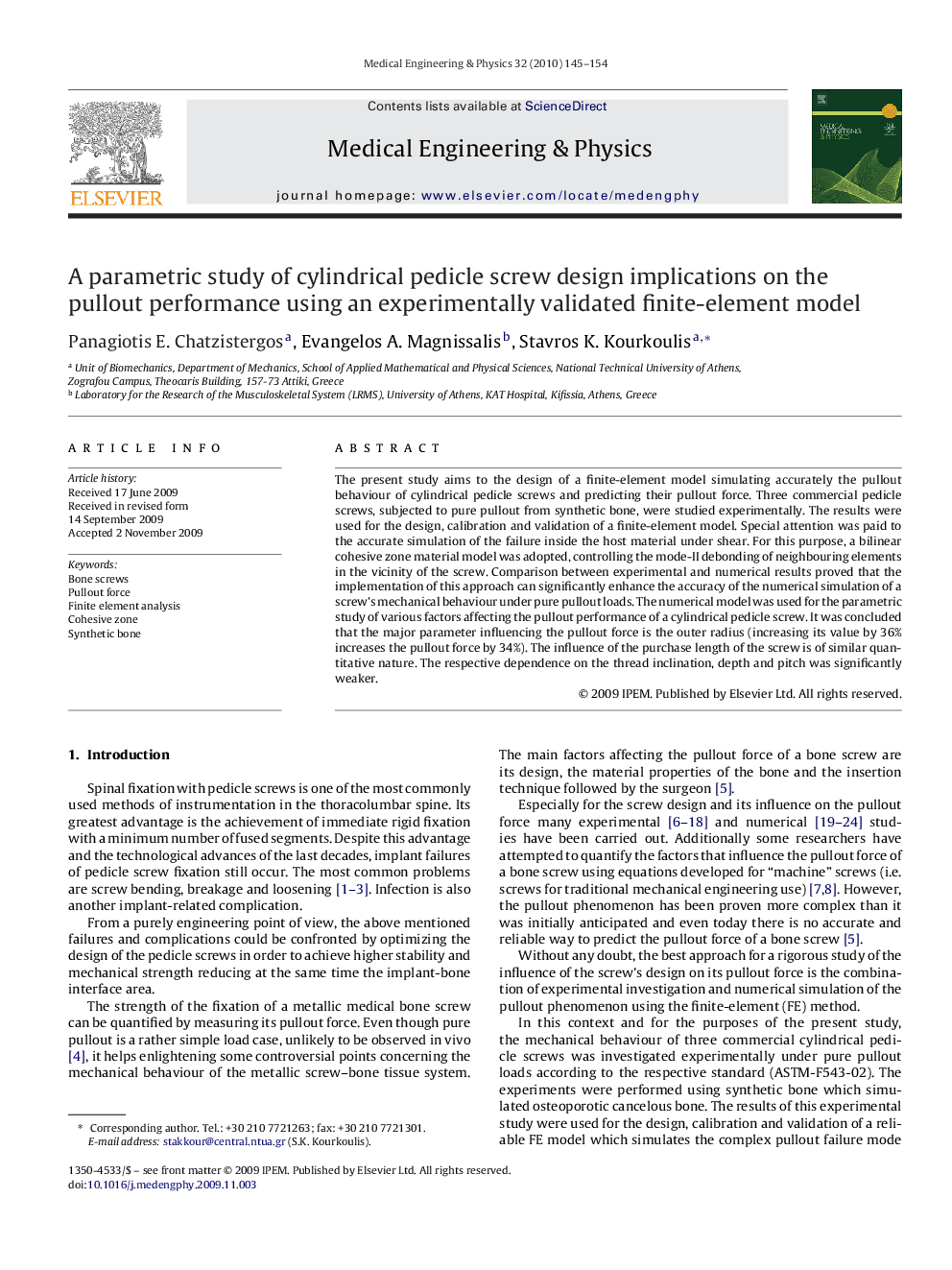| Article ID | Journal | Published Year | Pages | File Type |
|---|---|---|---|---|
| 877031 | Medical Engineering & Physics | 2010 | 10 Pages |
The present study aims to the design of a finite-element model simulating accurately the pullout behaviour of cylindrical pedicle screws and predicting their pullout force. Three commercial pedicle screws, subjected to pure pullout from synthetic bone, were studied experimentally. The results were used for the design, calibration and validation of a finite-element model. Special attention was paid to the accurate simulation of the failure inside the host material under shear. For this purpose, a bilinear cohesive zone material model was adopted, controlling the mode-II debonding of neighbouring elements in the vicinity of the screw. Comparison between experimental and numerical results proved that the implementation of this approach can significantly enhance the accuracy of the numerical simulation of a screw's mechanical behaviour under pure pullout loads. The numerical model was used for the parametric study of various factors affecting the pullout performance of a cylindrical pedicle screw. It was concluded that the major parameter influencing the pullout force is the outer radius (increasing its value by 36% increases the pullout force by 34%). The influence of the purchase length of the screw is of similar quantitative nature. The respective dependence on the thread inclination, depth and pitch was significantly weaker.
